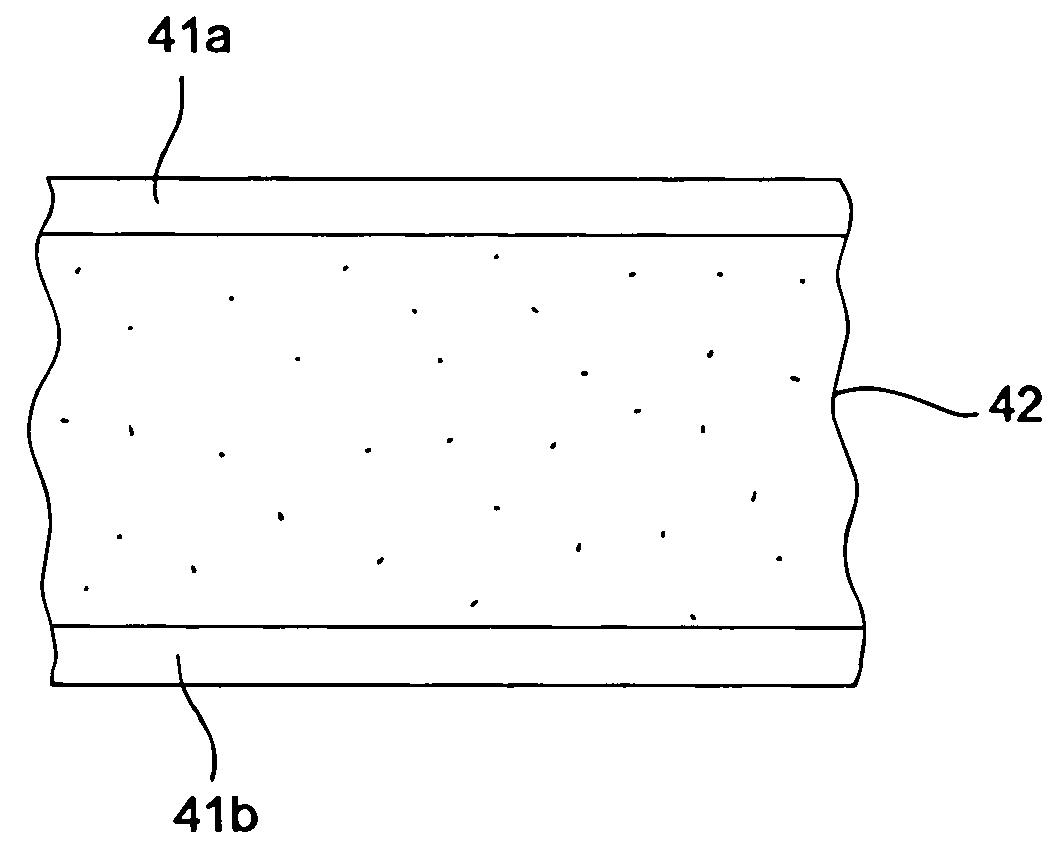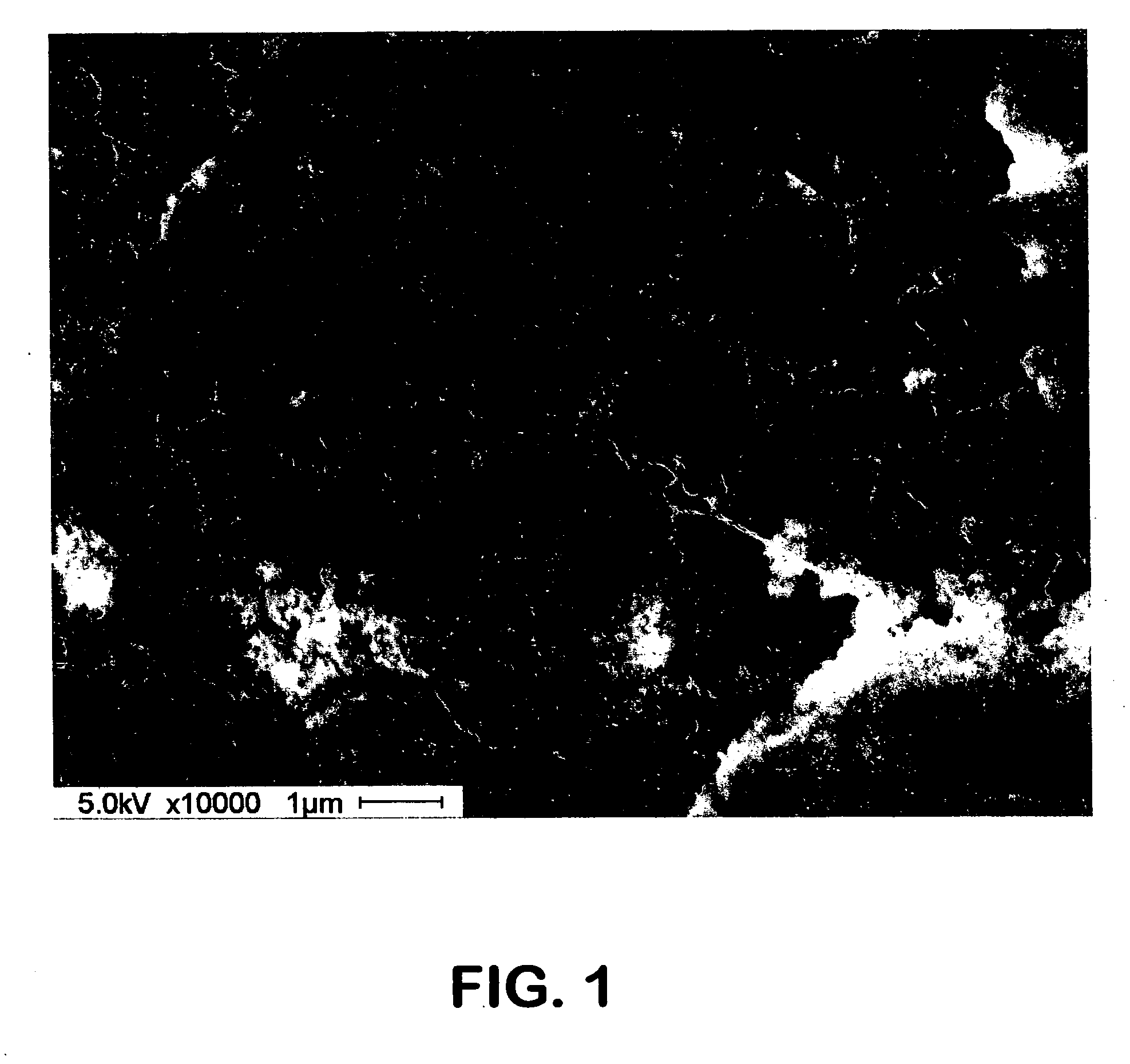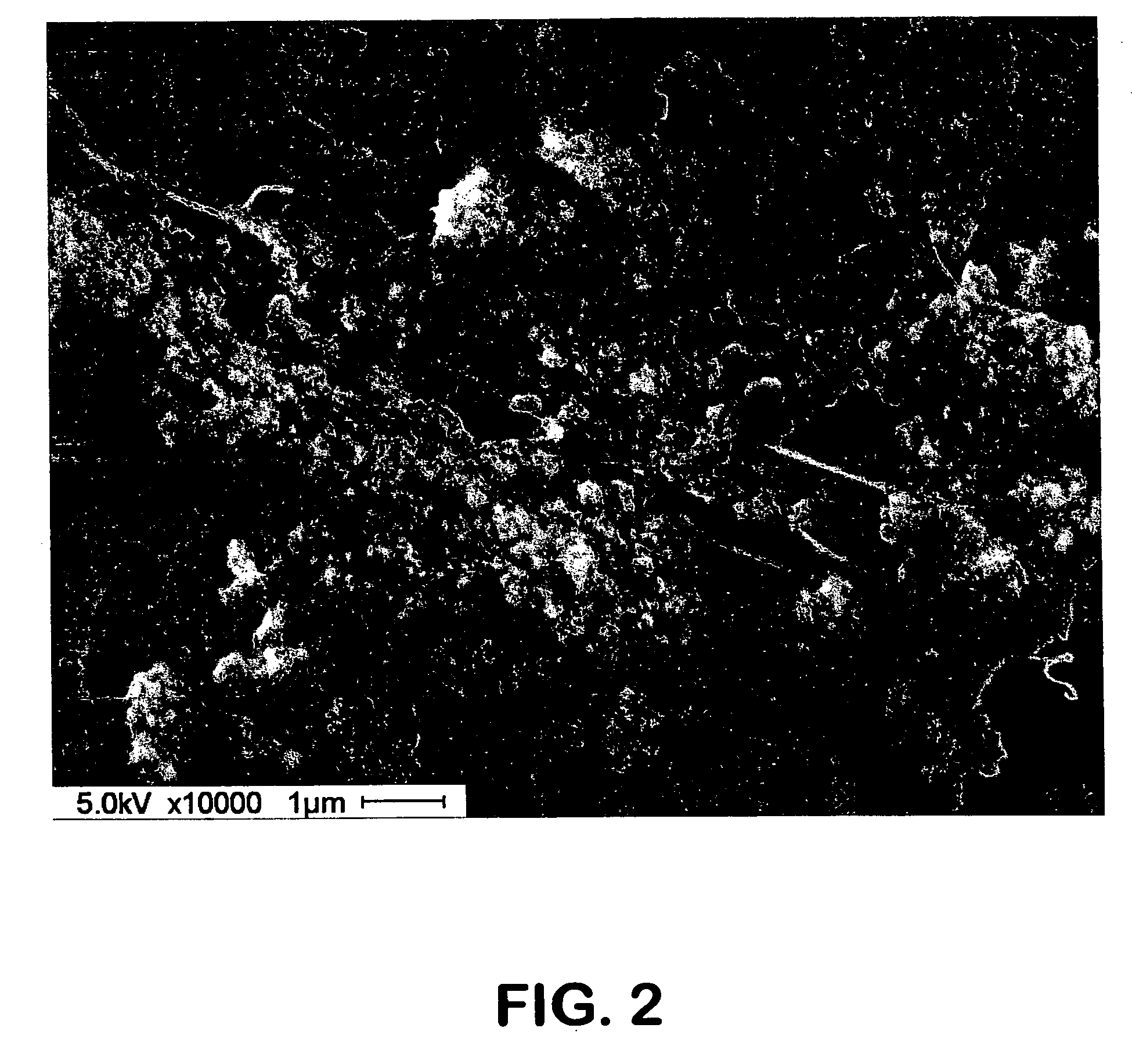Aerogel/PTFE composite insulating material
a composite insulation material and aerogel technology, applied in the field of materials, can solve the problems of low thermal conductivity, low thermal conductivity, and low thermal conductivity of air conducting heat, and achieve the effects of high sound absorption coefficient, good sound absorption, and high sound transmission loss
- Summary
- Abstract
- Description
- Claims
- Application Information
AI Technical Summary
Benefits of technology
Problems solved by technology
Method used
Image
Examples
example 1
[0060] A non-dusting material putty was made comprising about 80% wt aerogel particles and about 20% wt PTFE.
[0061] A 4.37% wt dispersion containing about 0.8 kg of hydrophobic, surface treated powder of silica aerogel (Nanogel aerogel, grade OJ0008, Cabot Corp., Billerica, Mass.), jet-milled to a particle size of about 7 μm, was made in a 25 liter container by adding about 8.75 kg of isopropyl alcohol (VWR International Inc., Bridgeport, N.J.) and 8.75 kg of de-ionized water while agitating at 750 rpm for about 5 minutes. The agitation speed was then increased to 1500 rpm. About 0.2 kg of PTFE particles in dispersion, as 0.875 kg of a 23% wt polytetrafluoroethylene aqueous dispersion (TEFRMS 153, DuPont, Wilmington, Del.), was rapidly poured into the mixing vessel. Immediately after, about 0.5 kg of 0.4% wt Sedipure surfactant solution (CF803, Tensid-Chemie Vertriebsgesellschaft mbH, BASF Group, Koeln, Germany) was poured into the mix. The total of the solids in the slurry was abo...
example 2
[0064] An insulating composite was prepared having a core material comprising 80% wt aerogel and 20% wt PTFE within an envelope of ePTFE membrane.
[0065] The material of Example 1, was poured into a rectangular mold having dimensions of 12 cm×13.3 cm×0.8 cm and slightly compressed into a putty. The mold containing the putty was placed between the two layers of aluminized plastic foil. The mold was removed leaving the molded putty between the two layers of the foil. Three sides of the foil around the molded putty were sealed using a hot iron to form an envelope. The envelope containing the putty was transferred into a vacuum packing machine, and the fourth edge of the envelope was sealed under vacuum of 1.5 kPa.
[0066] The final vacuum packed form was very flexible, did not form any cracks or edges upon flexing, and had an overall thickness of 7.12 mm and thermal conductivity of 9.55 mW / m K when measured substantially according to the test for Thermal Conductivity Measurements (Test ...
example 3
[0067] An insulating structure was made from a material comprising about 80% wt aerogel and about 20% wt PTFE.
[0068] In a 75.7 liter open mixing vessel, about 29.2 kg of de-ionized water was added to about 29.2 kg. of isopropyl alcohol (VWR International, Inc., Bridgeport, N.J.). To this, about 2.68 kg of hydrophobic, surface treated silica aerogel (Nanogel aerogel, grade OJ0008 from Cabot Corp., Billerica, Mass.; jet-milled to a particle size of about 7 μm) was added. Using a standard propeller type impeller, the whole mix was agitated at 1500 rpm for four (4) minutes and then at 1000 rpm for another four (4) minutes to obtain a uniform slurry. To this slurry, about 0.68 kg of PTFE solids was added in the form of dispersion (TEFRMS 153, DuPont, Wilmington, Del.) containing about 26.3% by weight solids. The mix was agitated at 1000 rpm for one (1) minute to coagulate the PTFE in presence of silica aerogel. The coagulum was filtered, dried, chilled and screened into a granular powde...
PUM
| Property | Measurement | Unit |
|---|---|---|
| thermal conductivity | aaaaa | aaaaa |
| thermal conductivity | aaaaa | aaaaa |
| thermal conductivity | aaaaa | aaaaa |
Abstract
Description
Claims
Application Information
 Login to View More
Login to View More - R&D
- Intellectual Property
- Life Sciences
- Materials
- Tech Scout
- Unparalleled Data Quality
- Higher Quality Content
- 60% Fewer Hallucinations
Browse by: Latest US Patents, China's latest patents, Technical Efficacy Thesaurus, Application Domain, Technology Topic, Popular Technical Reports.
© 2025 PatSnap. All rights reserved.Legal|Privacy policy|Modern Slavery Act Transparency Statement|Sitemap|About US| Contact US: help@patsnap.com



